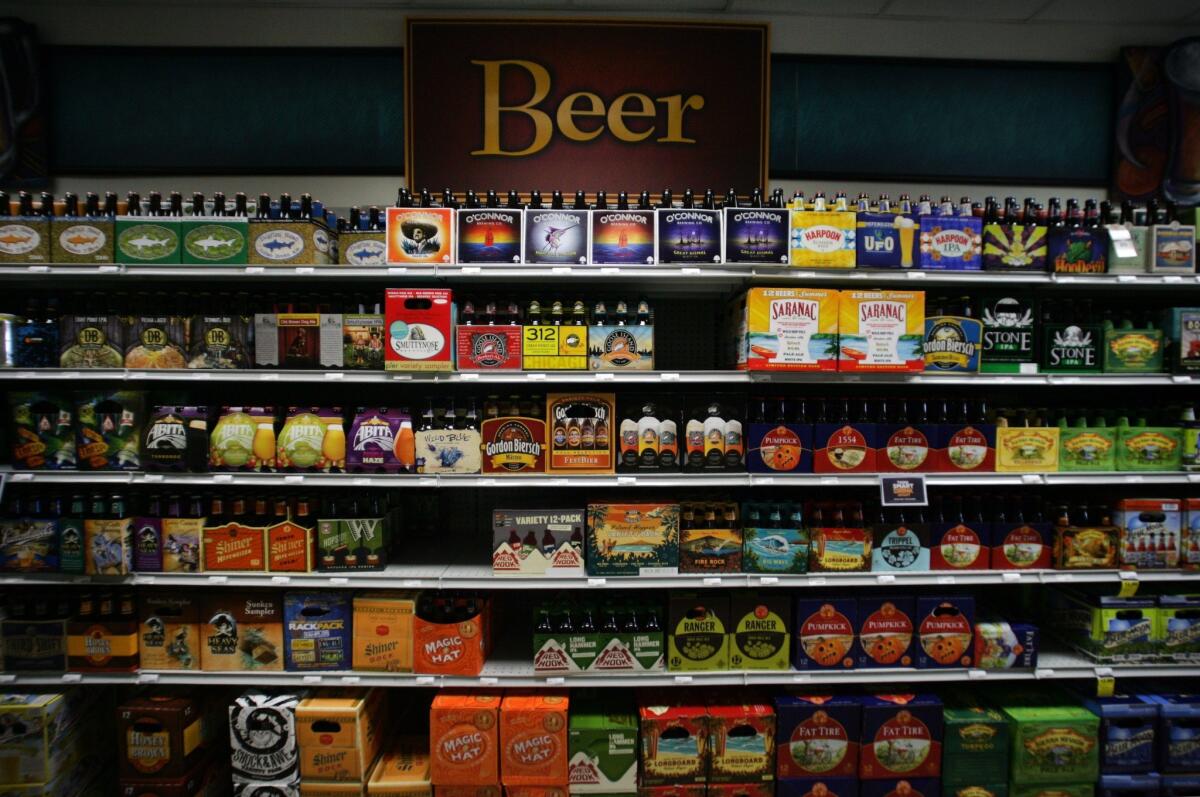Middle-aged men make up majority of alcohol poisoning deaths

Middle-aged white men -- not teenagers -- made up the majority of alcohol poisoning deaths in the United States from 2010 to 2012, according to a report by the federal Centers for Disease Control and Prevention.
Researchers found that there were 2,200 alcohol poisoning deaths a year, which averaged to about six deaths a day. Most of the dead, 76%, were adults ages 35 to 64. Six percent were older than 64.
Thirteen percent of the deaths were in the 26-to-34 age group, and 5% were among those 15 to 24.
The results, released Tuesday, are consistent with previous research on binge drinking, which is defined as four or more drinks for women and more than five for men, said Dr. Robert Brewer, director of the CDC’s alcohol program.
He said research has shown that binge drinking tends to be more common among white, non-Latino men, though Native Americans had the most alcohol poisoning deaths per million people of any of the races in the report.
“It’s not just a problem with kids,” he told the Los Angeles Times. “This is an outcome that is directly linked to binge drinking, and binge drinking at high levels.”
Among the states, the highest death rate was in Alaska (46.5 deaths per million), and the lowest was in Alabama (5.3 per million). Brewer said deaths from drinking often occur in areas with rural populations, where it may be hard to get immediate access to medical care.
Alcohol dependence was listed as a contributing cause of death in about 30% of the deaths, which Brewer said showed that “you don’t have to be an alcoholic to die of alcohol poisoning.”
An earlier CDC report estimates that about 38 million adults report binge drinking about four times a month and consume about eight drinks each time.
------------
FOR THE RECORD
Jan. 7, 3:30 p.m.: An earlier version of this post said a CDC report released this week estimated that 8 million Americans said they engaged in binge drinking about four times a month. In fact, 38 million Americans reported binge drinking, and the estimate comes from an earlier CDC report.
------------
Brewer said strategies aimed at decreasing the number of smokers can also reduce excessive drinking. These recommendations include increasing the price of alcohol, reducing the number of establishments that serve alcohol and screening patients for excessive drinking.
“We really need to educate the population about what safe alcohol consumption is,” said Dr. Andrew Saxon, director of the addiction psychiatry residency program at the University of Washington in Seattle, who was not affiliated with the report. “People have really distorted norms about what safe alcohol consumption is.”
For more news, follow @smasunaga on Twitter.
More to Read
Sign up for Essential California
The most important California stories and recommendations in your inbox every morning.
You may occasionally receive promotional content from the Los Angeles Times.











